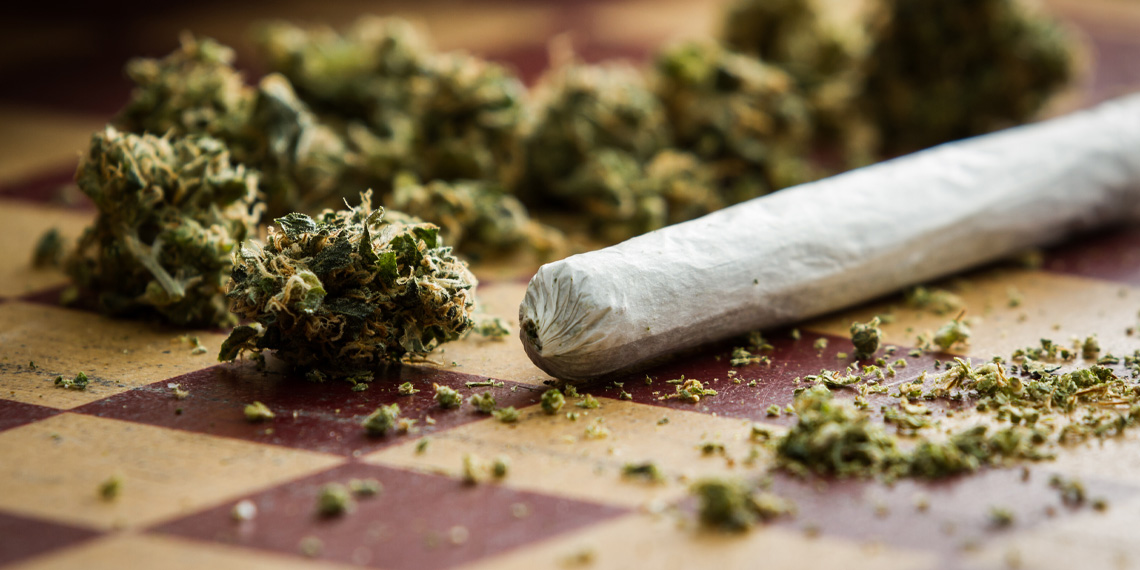In a recent study published in the journal Psychopharmacology, researchers found that adolescents who exhibit conduct problems and who are more socially engaged with their peers are more likely to use cannabis in the future. Furthermore, using cannabis during adolescence may lead to increased hyperactivity and inattention symptoms, though these effects seem to diminish with age.
Adolescence is a critical period for brain maturation, with significant changes occurring in brain structures and functions that are essential for cognitive and emotional development. Cannabis, being one of the most commonly used illicit substances during this stage, has the potential to interfere with these developmental processes. However, the exact effects of cannabis on the adolescent brain remain unclear, prompting the need for detailed research in this area.
Researchers were particularly interested in distinguishing whether cannabis use is a result of preexisting behavioral and psychological traits or if it contributes to the development of such traits. This distinction is important because it informs whether preventive measures should focus more on identifying at-risk individuals based on their existing behaviors and social dynamics or on mitigating the effects of cannabis use once it has begun.
“Ever since the beginning of society, humans have been using psychoactive substances. Nowadays, cannabis is among the most widely used, making it crucial to understand its long-term effects, especially when use begins during adolescence – a very critical period for brain development. I believe knowledge is power! Through research, we can help people make informed decisions, which is my main motivation to investigate this topic,” said study author Inês Macedo, a PhD student and member of the Laboratory of Neuropsychophysiology at the University of Porto.
The researchers used data from the IMAGEN study, a large longitudinal cohort involving 2341 adolescents from England, Ireland, France, and Germany. Participants were assessed at ages 14, 19, and 22 using a variety of psychological, cognitive, and neuroimaging measures.
To be included in the study, participants had to report no or minimal use of alcohol and nicotine at the baseline assessment (age 14). Exclusion criteria included using any illicit substance more than twice or reporting the use of a fictitious substance. This left a sample of 1946 drug-naïve adolescents, with 164 going on to use cannabis by age 19.
Participants completed the Monetary Incentive Delay (MID) task during functional Magnetic Resonance Imaging (fMRI) sessions to assess brain activity related to reward processing. This task involved responding to cues that signaled potential monetary gains, allowing researchers to examine activity in brain regions like the ventral striatum and prefrontal cortex.
The study found that certain behavioral traits at age 14 could predict cannabis use by age 19. Adolescents with higher scores for conduct problems and lower scores for peer problems were more likely to use cannabis. Conduct problems included behaviors like breaking serious rules, while peer problems referred to difficulties in making friends.
“It was very curious to find that adolescents who had fewer peer problems at 14 years old were more likely to transition to cannabis use within five years!” Macedo told PsyPost. “One possible explanation for this unexpected result is that being more sociable may increase exposure to peer pressure and to other peers with conduct problems, providing more favorable social contexts for future cannabis use.”
By age 19, those who used cannabis showed higher levels of hyperactivity and inattention compared to non-users. Interestingly, these symptoms seemed to decrease over time, with no significant differences observed by age 22 between those who continued to use cannabis and those who abstained for at least a month. This suggests that while cannabis use during adolescence may increase certain behavioral symptoms, these effects are not necessarily permanent.
“Our study suggests that adolescents with more conduct problems (e.g., who break serious rules) and who have less problems with their peers (e.g., who have less trouble making friends) are at greater risk for future cannabis use,” Macedo explained. “We also found that cannabis use might increase hyperactivity and inattention symptoms during adolescence, although these effects seem to subside with age.”
“It’s important to note that our study mainly involved light cannabis users, with few daily or near-daily users. Still, it is interesting that we had some significant differences, even in such low frequency cannabis users! This indicates that daily users might experience other effects and have distinct neuropsychological characteristics than light users. Therefore, it is very important to emphasize that our results cannot be generalized to more frequent, adolescent cannabis users.”
Contrary to expectations, the study did not find significant differences in reward-related brain activity or cognitive functioning between future cannabis users and non-users at age 14. Additionally, no significant changes in these measures were observed in those who used cannabis by age 22. This implies that light cannabis use may not have long-term effects on brain function or cognitive abilities, at least within the age range studied.
“Like all studies, ours has limitations,” Macedo noted. “We had a significant amount of missing data for the neurocognitive measures, which may explain the lack of significant results. Additionally, having a greater representation of daily cannabis users would increase the generalization of our findings (although I don’t necessarily see this as a major limitation, it is a very important point to emphasize).”
“This study is part of my ongoing PhD project, where I am investigating the long-term effects of cannabis use on the brain and the potential reversibility of these effects with abstinence. We are currently recruiting participants at the University of Porto (Portugal) and collecting data on brain activity (via electroencephalography), psychopathology (e.g., depression, anxiety, psychosis), cognition (e.g., memory, attention, inhibitory control), and substance use patterns. Given the inconsistencies in the cannabis literature, we aim to provide new insights and inform the general population about our findings.”
The findings highlight the importance of identifying adolescents at risk for future cannabis use based on conduct problems and social engagement. It also underscores the need for continued research to fully understand the long-term effects of cannabis on the developing brain.
“We need more funding for longitudinal studies that track individuals from before cannabis use onset,” Macedo said. “These will be essential to uncover the true effects of cannabis on the brain; longitudinal research can allow us to distinguish the effects of cannabis use from pre-existing individual differences that may predispose individuals to substance use.”
The study, “Light Cannabis Use and the Adolescent Brain: An 8-years Longitudinal Assessment of Mental Health, Cognition, and Reward Processing,” was authored by Inês Macedo, Tiago O. Paiva, Rita Pasion, Laura Daedelow, Andreas Heinz, Ana Magalhães, Tobias Banaschewski, Arun L. W. Bokde, Sylvane Desrivières, Herta Flor, Antoine Grigis, Hugh Garavan, Penny Gowland, Rüdiger Brühl, Jean-Luc Martinot, Marie-Laure Paillère Martinot, Eric Artiges, Frauke Nees, Dimitri Papadopoulos Orfanos, Tomáš Paus, Luise Poustka, Sarah Hohmann, Nathalie Holz, and Juliane H. Fröhner.




